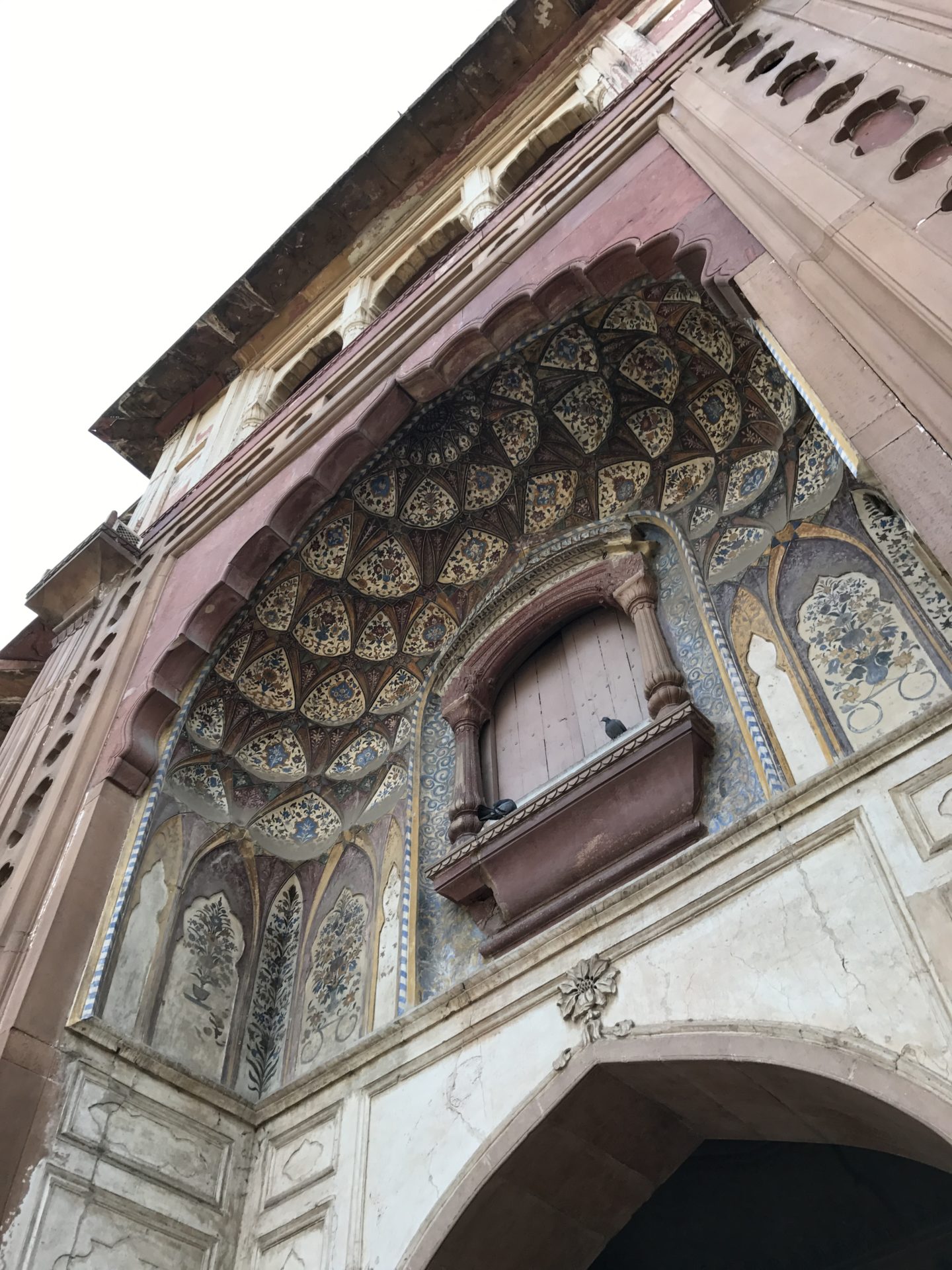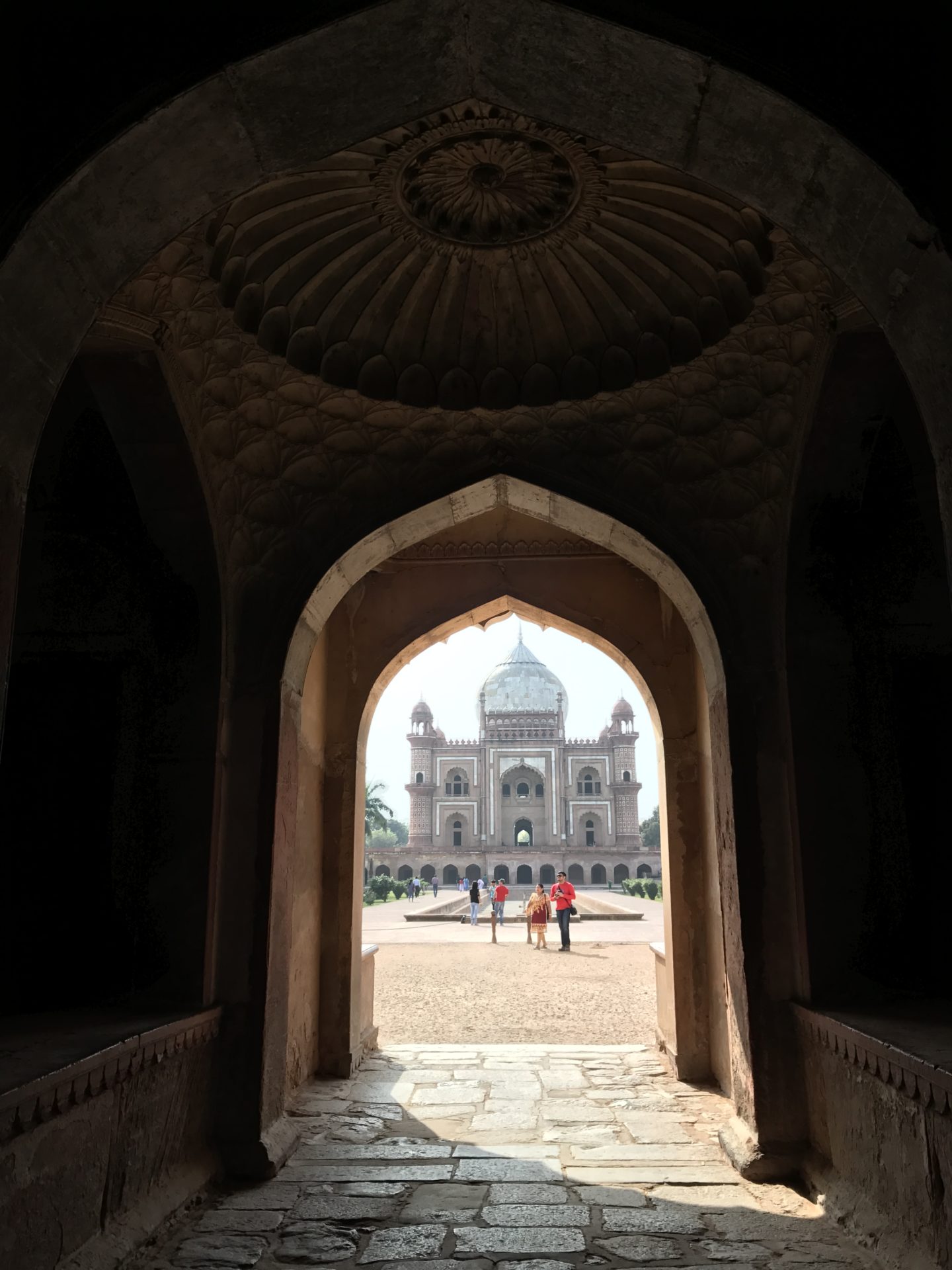Politicians can get away with just about anything, can’t they? Some of them even succeed in lauding their existence for eternity.
Take Safdarjung, for example.


His real name was Mirza Muqim Abul Mansur Khan – the governor of Awadh. Khan’s role was to assist the Mughal emperor of that time in administration. Pleased with his services, the king gave him the title of ‘Safdarjung.’
When the next emperor took over the kingdom, he made Safdarjung the Prime Minister. Years later, after Safdarjung’s death, his son built him a red, sandstone tomb, closely modelled after the tomb of Humayun.
However, if Humayun’s Tomb represents the might of the Mughals, Safdarjung’s Tomb, in contrast, reflects its decline.
Sandeep was driving me around in perfect Delhi weather when he randomly asked, “want to see the Safdarjung Tomb?” I’d never heard of it before. Actually, if I was standing across the street from it, I’d have never known it was there, hiding behind looming walls.
We pay the nominal entry fee, step into the majestic tomb complex, and the silhouette of the tombs bulbous dome can be seen not far away. It appears to be in perfect symmetry, flanked by a row of palm trees on either side, leading up to the monument. There’s an abundance of greenery and flowering shrubs set within a large, manicured lawn. Rising high from its plinth is the beautiful tomb – a feast for the eyes, despite the popular opinion that it is visually and architecturally flawed.
Apparently, the plinth is too small to balance the prominent vertical axis of the mausoleum. In addition, the buff and red coloured sandstone on the dome looks like a mismatched jigsaw puzzle. Since the existence of the State was in bad shape during the time of the tomb’s construction, there was no financial backing and marble was plundered from other pre-existing tombs. Hence, the mismatch.
As I walked inside, I too couldn’t help but notice the lack of refinement. The skewed proportions, elongated façade, mismatched stonework and unfinished marble inlay work are all a disappointing end to grand Mughal architecture. But then, architecture does reflect the times, and this one shows depleting coffers and degenerate lifestyles.
To me, the tomb, with its silence and bare handful of visitors is a delight! I can enjoy the aura of undisturbed serenity. The air is tranquil and fragrant, which is surprising, especially since the monument is hemmed by the busy, traffic-choked Lodhi road.
The tomb itself is splendid and has an imposing aura of grace, despite its faults. Double storeyed with 8 chambers, it has a central octagonal chamber housing the mortal remains of Safdarjung in a crypt below the ornamental coffin. The walls taper towards the roof, in which elaborate floral patterns have been carved
When looked at as a whole, and without bias, Safdarjung Tomb is really quite beautiful! The cool fragrant breeze and greenery, the gateway and dome – all look like something in perfect harmony from a distance. Perhaps what makes a difference is the eye with which the monument is looked at.
Like this post? Comment below and let me know!
You can also find me on Facebook, Twitter and Instagram. Cya there!